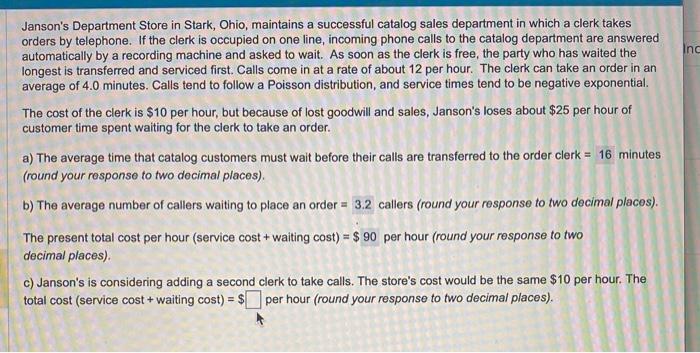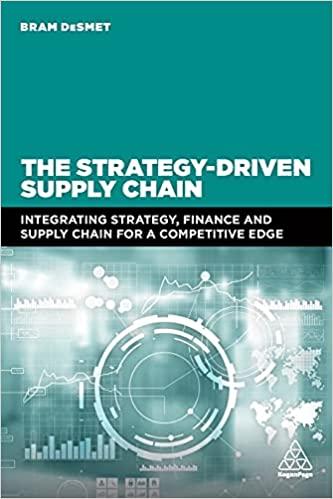hello, only request that part c be answered and explained

Janson's Department Store in Stark, Ohio, maintains a successful catalog sales department in which a clerk takes orders by telephone. If the clerk is occupied on one line, incoming phone calls to the catalog department are answered automatically by a recording machine and asked to wait. As soon as the clerk is free, the party who has waited the longest is transferred and serviced first. Calls come in at a rate of about 12 per hour. The clerk can take an order in an average of 4.0 minutes. Calls tend to follow a Poisson distribution, and service times tend to be negative exponential. The cost of the clerk is $10 per hour, but because of lost goodwill and sales, Janson's loses about $25 per hour of customer time spent waiting for the clerk to take an order. a) The average time that catalog customers must wait before their calls are transferred to the order clerk =16 minutes (round your response to two decimal places). b) The average number of callers waiting to place an order = callers (round your response to two decimal places). The present total cost per hour (service cost + waiting cost) =\$ per hour (round your response to two decimal places). c) Janson's is considering adding a second clerk to take calls. The store's cost would be the same $10 per hour. The total cost (service cost + waiting cost) =$ per hour (round your response to two decimal places). Janson's Department Store in Stark, Ohio, maintains a successful catalog sales department in which a clerk takes orders by telephone. If the clerk is occupied on one line, incoming phone calls to the catalog department are answered automatically by a recording machine and asked to wait. As soon as the clerk is free, the party who has waited the longest is transferred and serviced first. Calls come in at a rate of about 12 per hour. The clerk can take an order in an average of 4.0 minutes. Calls tend to follow a Poisson distribution, and service times tend to be negative exponential. The cost of the clerk is $10 per hour, but because of lost goodwill and sales, Janson's loses about $25 per hour of customer time spent waiting for the clerk to take an order. a) The average time that catalog customers must wait before their calls are transferred to the order clerk =16 minutes (round your response to two decimal places). b) The average number of callers waiting to place an order = callers (round your response to two decimal places). The present total cost per hour (service cost + waiting cost) =\$ per hour (round your response to two decimal places). c) Janson's is considering adding a second clerk to take calls. The store's cost would be the same $10 per hour. The total cost (service cost + waiting cost) =$ per hour (round your response to two decimal places)








